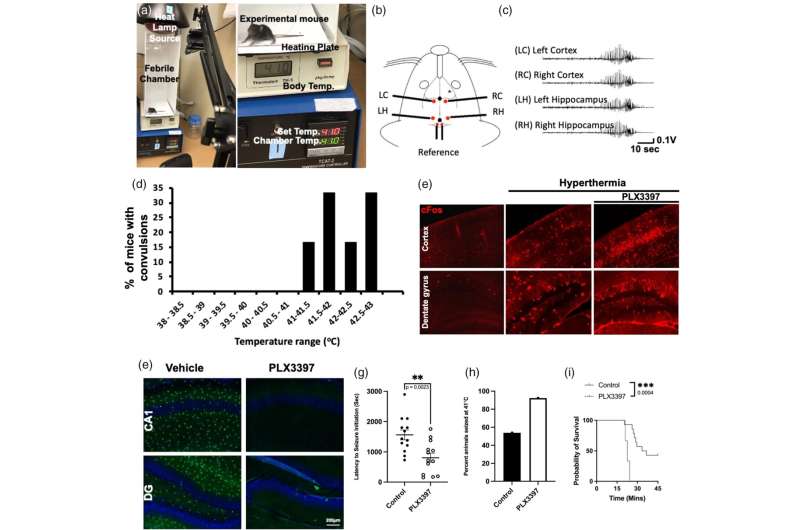This article has been reviewed according to Science X's editorial process and policies. Editors have highlighted the following attributes while ensuring the content's credibility:
fact-checked
proofread
Seizure discoveries advance efforts to develop better treatments

New University of Virginia School of Medicine insights into how the brain responds to seizures could facilitate the development of much-needed treatments for the third of patients who don't respond to existing options.
The research, from the labs of UVA's Ukpong B. Eyo, Ph.D., and Edward Perez-Reyes, Ph.D., suggests that immune cells called microglia play important, beneficial roles in controlling various types of seizures. Prior research had left scientists uncertain whether these cells were helpful or harmful during the brain's seizure response, so UVA's new discovery offers useful direction for researchers developing new treatments.
"Over the years, there has been debate as to the precise roles of microglia in seizure disorders, and the availability of precise tools to specifically target microglia without affecting other aspects of the brain has been lacking until the approach we have employed in this study," said Eyo, of UVA's Department of Neuroscience and Center for Brain Immunology and Glia (BIG Center), as well as the UVA Brain Institute.
"Our study examined microglial contributions in different models of seizures. [The results] suggest that broadly enhancing microglial activity in patients with different seizure origins could be a promising approach."
Understanding seizures
Seizure disorders affect more than 65 million people around the world. In addition to the immediate dangers seizures cause, prolonged seizures called status epilepticus can cause permanent brain damage. Seizures are commonly associated with epilepsy, but they can have a variety of causes, including infections, trauma, and even low blood sugar.
Most existing seizure treatments target nerve cells called neurons, but researchers have increasingly come to appreciate the importance of other cells, such as microglia, in determining how the body responds to seizures. Better understanding the role of microglia could open the door to innovative approaches to preventing and managing seizures.
To shed light on the mysterious role of microglia, the UVA researchers eliminated the cells in their lab models of seizures. This allowed them to see what would happen without the microglial response—would lab mice fare better or worse? The results offered clear indications that the microglia were beneficial: Mice lacking the response suffered worse seizures, while mice with normal microglia activity recovered better afterward.
"This study is a great example of UVA's collaborative culture and the importance of seed funding by the UVA Brain Institute that got the ball rolling," said Perez-Reyes, of UVA's Department of Pharmacology and the UVA Brain Institute. "We hope to apply this knowledge to develop novel gene therapies for epilepsy and quiet the brain storms that are seizures."
UVA's new research has produced several promising leads for scientists to pursue. In particular, Eyo and Perez-Reyes say, additional investigation is needed to determine how exactly the microglia are helping the body control and respond to seizures. This could be by cleaning up excess neurotransmitters, by calming overstimulated neurons or by some other means, they note.
"There is much more work that needs to be done to clarify the precise mechanisms of microglial activity in rodent seizure models and ascertain its translational potential," Eyo said. "Given our comprehensive research program encompassing both basic science research and clinical research on seizure disorders as well as our strong network of research collaborations, the University of Virginia is a great place to continue to make such advances."
The work is published in the journal Glia.
More information: Synphane Gibbs‐Shelton et al, Microglia play beneficial roles in multiple experimental seizure models, Glia (2023). DOI: 10.1002/glia.24364


















